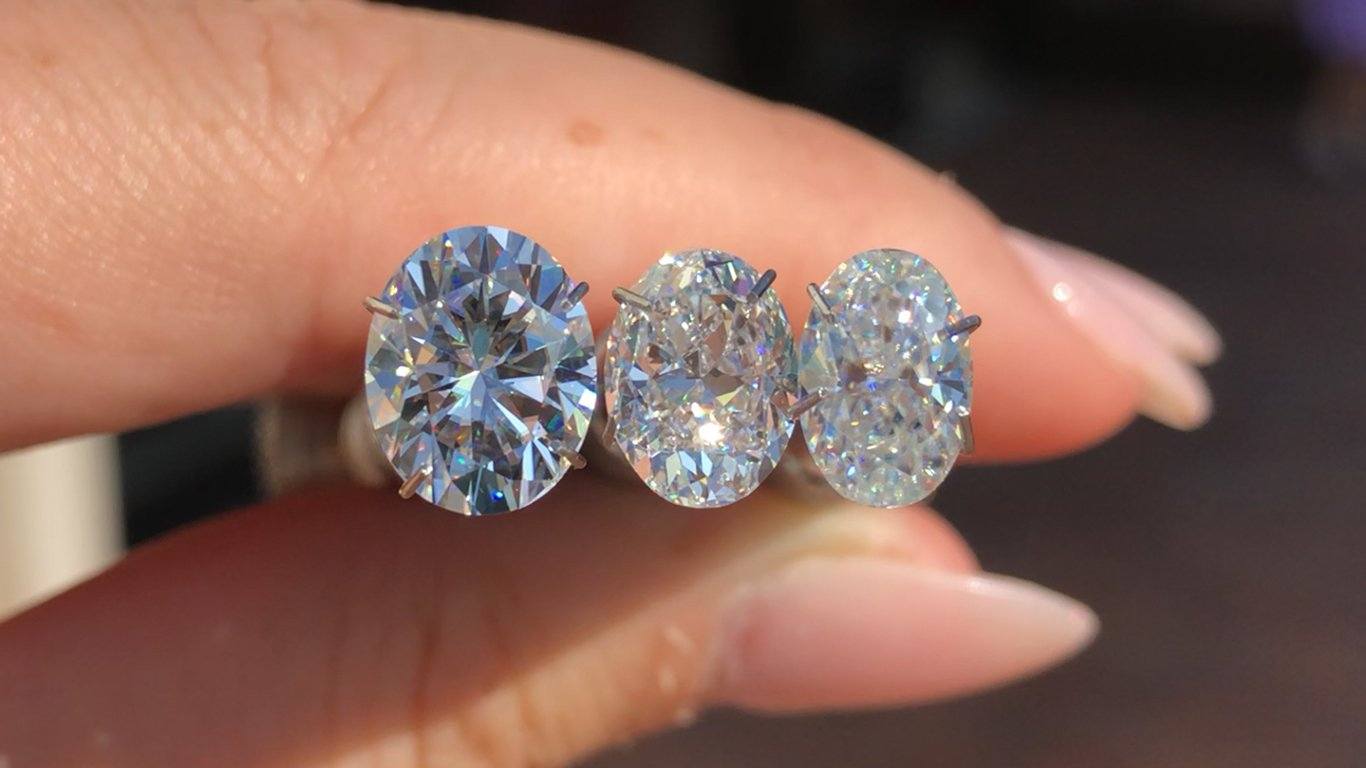Introduction
When it comes to choosing an exceptional gemstone for jewelry, moissanite and moissanite vs diamond are two of the most popular options available today. Both possess unique qualities that appeal to different preferences and budgets. Understanding the distinctions between these gemstones can help you make an informed decision that aligns with your personal tastes and desires.
Moissanite: A Modern Marvel
Moissanite is a relatively recent addition to the world of gemstones. Originally discovered in 1893 by Henri Moissan, this gemstone is renowned for its brilliance and fire. It is composed of silicon carbide and is known for its durability, ranking close to diamonds on the Mohs scale with a rating of 9.25. This hardness makes moissanite an excellent choice for everyday wear jewelry such as engagement rings and wedding bands.
Characteristics of Moissanite
Brilliance: Moissanite exhibits a stunning brilliance due to its high refractive index, which surpasses that of diamonds.
Color: Typically, moissanite appears near colorless but can also exhibit a slight yellow or greenish hue under certain lighting conditions.
Affordability: One of the most attractive features of moissanite is its affordability compared to diamonds of similar size and appearance.
Diamonds: The Timeless Classic
Diamonds have captivated hearts and minds for centuries with their unparalleled beauty and enduring value. Formed deep within the Earth’s mantle under intense pressure and heat, diamonds are composed of pure carbon. They are celebrated not only for their dazzling brilliance but also for their rarity and symbolic significance.
Characteristics of Diamonds
Fire and Brilliance: Diamonds are renowned for their extraordinary sparkle and brilliance, which is unmatched by any other gemstone.
Color: Diamonds occur naturally in various colors, including colorless, yellow, brown, blue, and even pink, with colorless diamonds being the most prized.
Durability: With a perfect 10 rating on the Mohs scale, diamonds are the hardest natural substance known, making them highly resistant to scratching and abrasion.
Moissanite vs Diamond: Key Differences
Brilliance and Fire
Moissanite: Known for its exceptional brilliance, moissanite exhibits a different kind of sparkle compared to lab diamonds. Its high refractive index results in a dazzling display of colors, often referred to as “fire.”
Diamond: Diamonds, with their unmatched sparkle and brilliance, offer a more subtle play of light that many consider the ultimate in gemstone beauty.
Affordability
Moissanite: One of the most compelling reasons to choose moissanite is its affordability. It can cost significantly less than diamonds of similar size and appearance, making it an attractive option for budget-conscious buyers.
Diamond: Diamonds, especially those of high quality and larger sizes, can be quite expensive due to their rarity and the cost of mining and cutting.
Color
Moissanite: Generally, moissanite appears near colorless. However, it can sometimes exhibit a slight yellow or greenish tint, especially in larger stones.
Diamond: Diamonds occur naturally in a wide range of colors. Colorless diamonds (graded D to F on the GIA scale) are the most valuable and sought after.
Durability
Moissanite: With a hardness rating of 9.25 on the Mohs scale, moissanite is highly durable and suitable for everyday wear.
Diamond: Diamonds are the hardest natural substance known, scoring a perfect 10 on the Mohs scale. This exceptional hardness ensures that diamonds can withstand the rigors of daily wear without scratching or damage.
Conclusion
In conclusion, both moissanite and diamond offer unique characteristics that cater to different preferences and budgets. Moissanite stands out with its impressive brilliance and affordability, making it an excellent choice for those who desire sparkle without the high cost. On the other hand, diamonds continue to captivate with their unrivaled brilliance, durability, and timeless allure.


